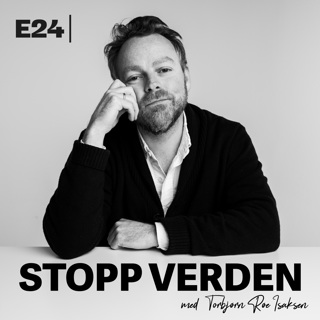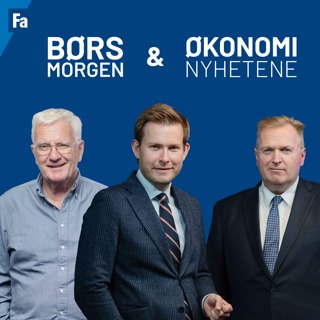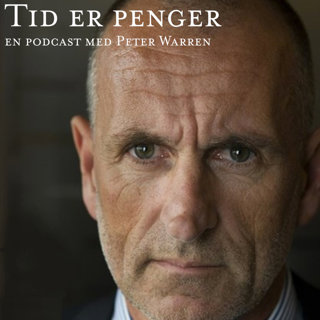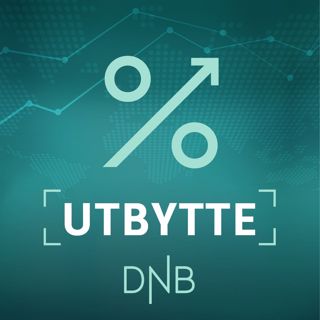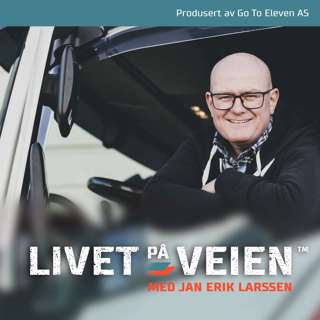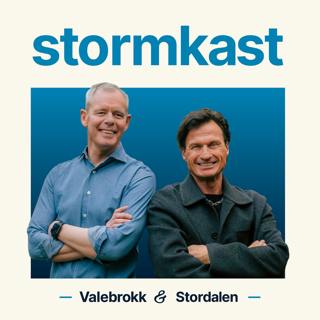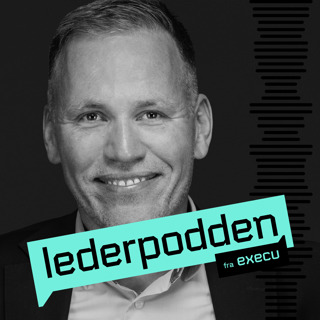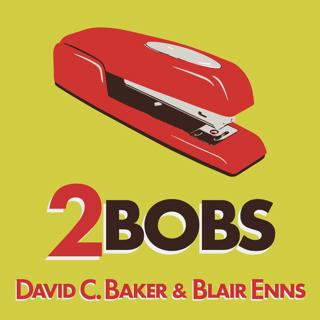
Collaborating with Competitors
David and Blair compare each other's competitiveness, and then offer some specific ways principals can actually collaborate with their competitors as a part of building beneficial business relationships. TRANSCRIPT BLAIR: David, today we're going to talk about how to crush your competition, is that right? DAVID: Instantly I got very excited about the concept, that's really not what we're going to talk about, but I love that idea. Oh my God, I'm just too competitive, but that's actually the opposite of what we're going to talk about I think, unless you want to switch it at the last minute. BLAIR: No, I was with a bunch of guys the other night, and had this little men's night retreat thing, and maybe more than half of them were entrepreneurs. One guy was winding down a business, and he was saying, "I'm not sure if I'm competitive enough to be in business." I didn't say anything, but I thought, I suppose that's vital for you to be competitive in your nature to succeed in business, would you agree with that? DAVID: Yes, I would, but there's something wrapped around competitiveness that is just as important to me, and that's risk-taking. BLAIR: Yeah. DAVID: It does seem like the two of those are related, that's why I quit doing a few things outside of work, because I realized I was not as competitive as some of the young fools that were willing to sacrifice their body, and I wasn't. It's not that my body is so precious, it shouldn't be sacrificed, it was more I was allergic to the pain. Yeah, there's something about competitiveness and risk-taking yeah, for sure. I'm competitive, do you think of yourself as competitive? BLAIR: I've measured my competitiveness and your competitiveness, and you're more competitive than I am. I'm as competitive as the average person, but the makeup of that competitiveness is a little bit skewed. You can break down competitiveness into different forms, so I think of myself as average competitiveness. DAVID: Okay, this is more about how do we tame or tamp down some of our competitiveness for our advantage, and for the advantage of the world really. BLAIR: You really want to talk about this idea of collaborating with your competitors, is that correct? DAVID: Right, yeah, and it's something I've learned in my own business life, but I've also tried to coach my clients to do it as well. It's been really interesting, it's a concept that strikes us like, did he really just say you should be more collaborative with your competitors, or did I mishear him? No, that's really what I mean. BLAIR: Okay, so we think of being in business just like my friend said the other night, we think of it as business is highly competitive, and we need to be cutthroat, and we need to always have an eye on our competition. We're trying to best them, I'm fond of saying that positioning is an act of relativity. You position relative to your competition, and in endeavoring to position your firm against your competition, you're trying to kill them. BLAIR: Now that's an overstatement, but that's the prevailing view, right? The competitors are there, people that ... It's your job to beat, it's your job to win against them, and you want to fly in the face of that a little bit, so where did this idea come from? DAVID: Well it's been rooted really in 20 plus years. I did something a little crazy back in the late 90s. I wanted to start an event, and that was obvious to me, I wanted to start an event. Okay, so what kind of an event would it be? Well it needs to be an event that's going to attract a lot of people. How do we do that? Well, the content has to be fantastic, it's like okay, then I just stopped in my tracks, because I'm thinking, well if the content's going to be great, then I've got to invite a lot of my competitors there. DAVID: We don't see eye to eye on everything, but I need to have them there, because they're very smart. People are going to come and want to hear from them as well, like what kind of a stupid conference would it be where I'm the only one speaking? That's not a conference, that's like your own personal platform. I was faced with a decision, do I really want to give my competitors a platform? DAVID: I was nervous about it, other people were a lot more nervous about it than I was, they thought I was crazy to be doing that. I thought, this is a worthwhile experiment, and maybe there's some value in being the person who organizes the conference, and does the programming for it. There turned out to be that value, but it was a wonderful experience. It opened up my eyes entirely to the fact that I don't have to make somebody else lose in order for me to win. DAVID: That I can let my guard down, and it actually translated into the way I run events now. People come to an event for the first time, and they're surprised that within about an hour, an hour and a half of the start of the event, people are starting to share stuff that they would not have thought they'd see themselves sharing at the beginning. They're much more transparent about it, and it's just sort of that style that I like to have, it fits with this notion of competitors. DAVID: Recently what struck me, and then I'll shut up for a minute, because I know I'm taking a long time to answer your question. I was listening to the Dan Patrick daily talk radio sports show, and he was talking about interviewing Kobe Bryant one time. They were talking about how do you get yourself up for a game that doesn't really matter? In other words, maybe you're out of the playoffs already, or you know you're going to beat this team, because they're not good. DAVID: What Kobe Bryant said, was at the end of the game, I want my competitor to question why they even got into the sports game. I want them to question why they even became a basketball player, right? I thought, well that's kind of funny, but it's really not the kind of spirit I want as a collaborator. BLAIR: Even when he's playing in a game that they're almost certain to win in, he's still thinking about crushing the spirit of his competitors. DAVID: Right, yeah, what's the point of that? BLAIR: Do you still have a page on your website that lists your competitors? DAVID: I do, right? I do. BLAIR: Am I on there? DAVID: I don't know, I know you don't want to be, so let's just say you're not. BLAIR: Yeah, I think you had me on there, and I called you out, I said, get me off that list. DAVID: Right. BLAIR: I don't know why that is, okay, so you conceived of this idea, this event, and you had a partner in this event, can we name the event? DAVID: Yeah, it's MYOB, Mind Your Own Business. BLAIR: Yeah. DAVID: The how people, were the financial partners and the marketing partners, and I did the programming. BLAIR: That's where you and I first met in 2003. I reached out to you when I started my business somewhere in 2002, and you invited me to speak at this thing. DAVID: Yeah, and look at how much good has come from that, right? BLAIR: Yeah. DAVID: You and I have become friends, we do a podcast together, we share a lot of clients. Here's the biggest thing, I learned so much by having you there. I mean the very first time I heard you speak, I learned so much. It made me such a better advisor, and the same could be said of the other folks, not everybody, but most of the other folks that I invited. It's like, oh wow, it made me a much better advisor by listening to them in that kind of a setting. BLAIR: Let's walk through how somebody can, once they get their head around this idea, how they can put it into practice. First, I can imagine what the objections are, right? When you're talking to somebody about this idea of be more open to your competitors and collaborative with them, what's the first thing that comes up objection wise? DAVID: Well it comes up a lot too, and it's like, "Oh, that's a good idea, but I can't put that on my website, because what if my competitor's see it?" It may be something like our new focus, that's usually not as big an issue, but things like client criteria, or some unique way we have of going about solving problems for clients, or a case study, or something like that. They envision these competitors in the wee hours of the morning sneaking onto their website and furiously copping things down and grabbing screenshots, and then reinventing their own firm, as if they're really doing that. DAVID: That's the objection, I don't want my competitors to see that. I don't want them to copy me. Do you hear that, or do you see it in other ways? I'm curious if it's just my clients. BLAIR: I'm not sure if I hear it a lot, but I sense it a lot, and I've experienced it myself too. My own experience has been, if you're really carving out a path of leadership in something, it means you're constantly, by the reinventing your business, or coming up with new IP, with new ideas, and by the time somebody's adopted something that you've ... Let's call it stolen, stolen something that you've put on your website and made it their own, you should be somewhere else, right? You should be off into the distance. DAVID: Right, and that's part of your practice, part of my practice, part of what we urge clients to do is to reinvent themselves frequently every couple of years maybe. While this may work beautifully for you now, it's not going to be the thing that you're doing down the road, reinventing. Let's talk about the whole positioning thing, how many competitors does Win Without Pitching have? BLAIR: It really depends on how you frame the question. If you look at sales training for creative professionals, I don't actually know of any other organization that frames their value proposition, the discipline in the market, the combination of discipline in the market that way. That would be ridiculous for me to say there's no direct competitor, so that's at the very narrowest, who else says we just do sales training for creative professionals? DAVID: Right. BLAIR: Our real competition is any new business consultant to the creative professions. DAVID: Right. BLAIR: Anybody who's selling sales training. Most sales trainers aren't specific to a market, so anybody in the sales training business, any new business consultant. DAVID: If somebody popped up, let's say you just heard through a client of yours or something, and they said, "Hey, have you seen [inaudible 00:09:14], it looks a lot like yours?" Pretend that you have this conversation with them, and you look at the website. It is the same positioning, sales training for creative professionals, or creative entrepreneurs, what would your reaction be? BLAIR: My reaction would be, I would gird myself for a fight in the most positive sort of way. I love a challenge, if somebody was using that same language, I would just steel myself and whip my team into a frenzy, and run out into the battlefield. DAVID: I'm picturing this movie scene, yelling to this guy. BLAIR: Yeah, Braveheart. DAVID: Right. BLAIR: Somebody would have to be using very specific language, very specific to me. One of the things that I've seen over the last few years, is when I started my business back in 2002, when I was a new business consultant, there were very few new business consultants. Whoever was out there, the Internet was still a relatively new thing, right? Web browsers were about seven or eight years old in 2002. BLAIR: If there was a lot of competitors out there, I wasn't aware of them, I was really aware of two or three. Nowadays there's rarely a week or a two week period that goes by where I'm not made aware of a new business consultant. I made this conscious decision a couple of years ago to just quit thinking about them as competitors, and just to think about them as my future distribution network. BLAIR: I recently put out a call on LinkedIn saying I want to forge a closer relationship with the world's best new business consultants. I know I met a lot of consultants out there who say, "I give your book, the Win Without Pitching Manifesto to all of my clients." What I said in this post on LinkedIn, I had about 30 inquiries from it, is if you're already preaching the principles, and if you're already teaching the Win Without Pitching way, and you're interested in formalizing the relationship, then reach out to me. BLAIR: I had to see somebody else doing that, and somebody else talk about the benefit of it just the way that you're doing it now. DAVID: Yeah. BLAIR: For me to just have this switch in my mind. You've been very good at this, and you've been a very good role model for me in this, in being a generous competitor, and it hasn't been in my nature. I'm the person who loves a fight, so something has shifted in me in the last couple of years, and I look around at the people I know in business, and some people that you and I both compete with. They are such open, generous, sharing people, even though we are fairly direct competitors. DAVID: Right. BLAIR: I've just decided that these are going to be my role models in that front too. Now, I'm mellowing in my old age or something, because something's definitely changed. DAVID: Yeah, it is really interesting to see. I'm doing an event shortly, and I've invited ... You'll be speaking there, it's really important to me that you speak there to address the whole sales training process. I'm just unqualified to even speak to it, but I feel like the people coming need to hear that. Then, I think four of my competitors will be there. They won't have a platform, but I will introduce them, they're coming for free. DAVID: I invited them, and I plan to put in the work. We're going to split up into groups, and we're going to try to apply these positioning principles to the individual firms. These competitors know what they're doing, and so the evil side of somebody might hear that and say, "Well, wouldn't someone just hire one of these." It's like, well that's fine, because in my mind feeling like you have all these competitors is really misunderstanding the fact that it's not just about what you do, but it's about how you do it. DAVID: I have a very specific style, and whenever I try to cross the line and be somebody that I'm not to a client, like more of a coach or something like that, I am doing a disservice to them, and I'm doing a disservice to me. I find it really wonderful to have these other folks who are very good at what they do, who have a more appropriate style for a certain client. When I think about living in a world where I couldn't recommend other options for my clients, it's a little bit sadder to me, because I do want my clients to get help, even if it's not with me. DAVID: Now what's interesting though, is we have different approaches to this when we're not as busy. BLAIR: Yeah. DAVID: We tend to be a little bit less generous when our businesses aren't run well, when we don't have a steady stream of opportunity. That's just another argument of 100 arguments to run your firm well, so that you're not paralyzed by not enough work, or thinner margins, or something like that. BLAIR: I was going to play devils advocate here a little bit, and push back and say, well it's easy for you to be magnanimous this way, you're the worldwide leader in your field. You've got all the work you want, I think most people from the outside looking in would see that, so it's easy for you to just say, "Well there's plenty for everyone." If you're running an independent creative firm, you've got a dozen people, you're not seen as meaningfully different, do you think the principle still applies? DAVID: No, I don't, and I think the solution there is to have a positioning where it's so much clearer to you and to your prospects where you're a perfect fit. If you haven't nailed that positioning equation yet for your firm, then I think this is a very dangerous thing to do, right? Now you could still be generous in some other ways, like you could be generous in sharing contractors with other agencies, or even some employees. In terms of clients, I think that would be a dangerous thing to do, if you haven't ... DAVID: Well, a couple of things, not just positioning, but also having this lead generation process in place. You and I have talked quite a bit about this, how we have a simplified plan that's driven by discipline, so if you don't have the positioning and lead generation in place, then it's a pretty dangerous thing to be this magnanimous. The way to fix that is not to be selfish, the way to fix this is to fix your positioning and lead generation. BLAIR: Do you find that your generosity towards your competitors is returned? Are you referred business or other similar invitations from these competitors? DAVID: In some cases I am for sure. I think about Tim Williams for instance who I think does really good work. I've sent work his way, he's sent work my way for sure. I think about Carl Sachs, I think about the folks at Newfangled. I think about Philip at the Consulting Pipeline podcast. I think about Drew McClellan, I hate mentioning names, because there's going to be a bunch of names I've left off, but in general yes, absolutely. DAVID: Even at the beginning where they're taken aback by the generosity, they'll soften up over a few years, and discover that it's real. I'm really trying to help them, I'm not trying to hurt them. That started years ago, like you write a new book, or you have a new program, tell all your competitors about it in a gracious, respectful way. Hey, this is where I'm headed, just want to let you know, and oh by the way, here's a copy of the book, hope you're doing well. DAVID: You see an article that's really helpful that would benefit them, you send it to them. I tell you, a big one is speaking engagements. BLAIR: Yeah. DAVID: If I've been on the platform somewhere, and I talk with the program person, I say, "Listen, this was fantastic, I loved this event. I appreciate you inviting me, do you want a couple of suggestions for people who are also would be a really good fit for this?" That's a perfect opportunity to extend that graciousness to one of your competitors. I find that you're not hurting yourself in any way, you're simply helping everybody in the process. DAVID: I've found that to be very effective, and I've had a lot of my competitors do the same for me, where they've introduced me to a speaking opportunity, and it's been very, very much appreciated. BLAIR: A guy I know who does over a million dollars a year in speaking fees said to me, the number one lead source for speaking engagements is other speakers, right? They get approached and say, "Well, I can't do it, but you might want to think of this other person." He said it's important for you to cultivate relationships with these other speakers, and that means you start referring speaking opportunities to them. DAVID: That's interesting. BLAIR: Two weeks later I was invited to speak in Dubai when I was in another part of the world, and I referred to my new friend. DAVID: Yeah, because you didn't want that long travel, yeah, absolutely. BLAIR: Let's talk about some specific ways agency principals can collaborate with their competitors. I think I've got a list here of some things that you've identified. At the top of the list you've got learn how to run your firm from each other. Do you want to unpack ... Oh, I just said the word unpack, do you want to peal that apart? DAVID: That even sounds more pretentious than unpack. BLAIR: Like an orange. DAVID: Let's just say unpack, okay? BLAIR: Yeah. DAVID: Yeah, what's the possible benefit in not helping another principal run their firm well? Hoping that they'll fail? Well, that seems pretty evil, right? The one area where it seems like there's the most benefit for everybody, is to learn how to run your business well. You've learned some principles about key metrics you want to look at, or how to hire the right person, or how to run a meeting better, or how to have the best relationship with your bank, or there's 100 things we could list there. DAVID: Those are the kinds of things that I would put at the top the list, because nobody enters this field with the business management training that would really benefit them. They're all starting from some other skill path, not a role path, and so they come into the business, and they have to learn everything either from somebody that they worked for, and often that's the best place to learn it. DAVID: A great example of a principal that you worked for before you started off on your own, or they learn it from maybe an advisor, like a paid advisor, or maybe they learn it from another principal. That would be the first area I would suggest collaboration, it could be informal or formal. I find that most principals have three or four people that they're friendly with, they can just shoot them an email, or get on the phone and say, "Hey, I'm facing this noncompete situation, what have you learned? Can you introduce me to a lawyer?" Something like that. BLAIR: Oh, that's great, including on here help find good employees. I was thinking about there's an agency principal in Australia you and I both know him. I've done a bunch of work with him. He's told me some stories of when he's had to fire people, they don't say fire in Australia or UK, they sack them, which always sounds extra harsh to us in North America. He's told me stories of he'd bring somebody in who isn't working out, and says, "You're not working out, I'm letting you go, but I think you've got great skills in these other areas, so I've lined up two interviews for you today." DAVID: Wow. BLAIR: Yeah, so he's ruthless when it comes to correcting hiring decisions, but he's very kind in how he goes about it, and he recognizes that everybody's got strengths, and he's got good relationships with his competitors. He's very clear about why he's letting that person go, and why he thinks his competitors should think about bringing that person on, and usually in a different role. DAVID: Right, yeah I think that's great, like if it's for the right reasons, there could be something about the style of this firm that wouldn't be true of another firm. It's not like they're a bad person, they're just not a good fit for this particular role. BLAIR: Is there a line that there's the danger of crossing? The first word I wrote down when you sent me notes on this was collusion. DAVID: Yeah. BLAIR: At some point can you get too close to your competitors? Does it cause some sort of problem, or the perception of problems maybe among clients, or maybe even regulators? DAVID: Yeah, well in the US that would fall under the jurisdiction of the FTC, Federal Trade Commission. Where collusion is very clear, and you can get your hand slapped pretty quickly would be around pricing. BLAIR: Yeah. DAVID: Not so much which opportunities to pursue, although you could get in trouble there, like hey, if I don't pursue this one, can you not pursue that one, that would be collusion. The main area would be on pricing, like how about what's your price on this? There have been some specific lawsuits, the handbook of pricing and ethical guidelines was one example that had to get rewritten, because of a lawsuit as I understand it. DAVID: That strikes me as evil, and I don't think we're talking about that so much. It's more like here's an example, so let's say you're going to respond to an RFP, okay? I know, don't shriek on me here Blair. You're going to respond to an RFP, and you know that another agency has been through an RFP process with them. You might just call them up and say, "Hey, what was that like? Is this even worth it?" Most of the time it's not going to be worth it, but that would not be collusion, that would just be simply sharing public information. BLAIR: I hadn't heard the story around pricing, I was doing a talk on pricing about 18 months ago to an industry group slightly tangential to the creative professions. There was a lawyer in the room, and he kept warning about collusion, he did not like the idea that the competitors were in the same room talking about pricing. I thought he was being ridiculous. DAVID: I think he was being ridiculous, where it can be collusion, is if we're talking about a specific instance. It's not about for instance, the labor law allows you to band together against a common enemy so to speak, that's not collusion. Collusion would be a specific instance related to pricing usually. BLAIR: Gotcha, all right, so let's say somebody's listening to this, and they're warming up to the idea of being more collaborative with their competitors, but they don't currently have relationships with those competitors. How do they go about it? Where do they find these people? Maybe they're so highly specialized, or poorly specialized, they're just not sure who their competitors are, how do you go about it? DAVID: Yeah, if you're poorly positioned, most of your competitors are the ones in your locale geographically. You know those, because they're there, and you share employees, and so on. If you're well-positioned, your competitors are more known to you, even though they're not close to you geographically. These are the names that keep coming up when you are competing for work and so on. DAVID: That would be one way to identify them, obviously Google's our friend here. Another way to identify them, is going to trade conferences. Trade conferences are almost always vertical, or they could be more demographic oriented conferences, horizontal conferences, where you keep seeing the same people there, not so much exhibiting, but you just see them there, they're speaking and so on. DAVID: You notice that these are the folks whose articles are appearing in the same places that yours are, so just connecting with them through your contacts, within a particular focus would be a good way to connect with them. Another might be a common mentor, I get this question a lot, like do you know of somebody that's doing this that I could talk with and so on? I don't connect people who aren't clients of mine, but if they are clients of mine, then I'll try to find somebody to connect them with. DAVID: I actually put round tables together, which are specific attempts to do this, that's not really the subject of this podcast, but that's an example of what a paid advisor might do. Sometimes a common mentor, so like if you're getting advice from an older woman or gentleman in your town who's coaching you on running a good creative business, because they've been in that field, and they've slowed down a little bit, they usually are going to know somebody else that would be a good fit for you. DAVID: I am talking about cooperating with folks who are definitely otherwise competitors of yours. I'm not talking about people that you might meet in a YEO, or YO kind of a context, I'm talking about people that you'd compete with normally. BLAIR: Okay, are there instances where this can go wrong? Obviously, I wouldn't ask you to name names, but I'm sure there has to be situations where you started being magnanimous towards a competitor, and then at some point realized this is a one-way relationship where this person is taking and not giving, and your idea about them ended up changing. DAVID: For sure, yeah, I can think of an attorney actually in New York that I was referring lots of work too, and it turned out that not only did they never share generously, but they kept asking, kept asking, and it became annoying. I just basically shut them down, they still do good work, so I haven't done anything to hurt them at all. If somebody is actually out to hurt me, then we come into the Kobe Bryant crush them phase, which is actually the evil side of this, and it's kind of fun. DAVID: You have to do that once or twice a year, right? Otherwise, I was just wondering if people are still listening at this point. Otherwise, it just doesn't happen, because who are the people that are going to hear the worst things about me as an advisor? It's going to be my competitors, right? If my competitors hear about me, but their experience in working with me is not at all matching, they're going to pause the conversation and say, even just to themselves, you must not be a good client, because that's not how I've experienced him. There's so many advantages here to make this work well. BLAIR: Yeah, it strikes me as this is going sound a bit corny, it's a bit like love though, right? The more you give, the more you get, and the more open you are, and more gracious you are with your competitors, the more likely you are to get back. Even if it's not a full reciprocation, there's still that feeling of you helping others, of yourself worth, etc., it's got to escalate. DAVID: Yeah, for sure, and there are many times when somebody does great work, and you've sent them lots of work, but they're not sending you work. That's okay, because they might be at a different place on the referral chain. In other words, by the time they hear of a client, they're past their need for you, whatever you happen to do along that chain. DAVID: It can't be a tit-for-tat thing, it's really just about surrounding yourself with people who are generous in life in many ways. I find that, that's a very satisfying experience, almost regardless of the outcome. BLAIR: Well, you've convinced me, I'm going to start thinking about maybe referring a piece of business to you. DAVID: Yeah, it's about damn time honestly. BLAIR: Thanks David, this has been great. DAVID: Bye Blair.
20 Jun 201827min

Four Segments of New Business
Blair and David come up with descriptive words that help clarify each of the four parts of what David calls the "pantheon" for new business: positioning, lead generation, sales, and pricing. Pricing Creativity: A Guide to Profit Beyond the Billable Hour Mastering the Value Conversation podcast episode
6 Jun 201827min

Using Assessment Instruments in Your Firm
David and Blair explore the big topic of personality assessment tools that can help firms “get the right people on the bus.” Not Your Typical Personality Types →
16 Mai 201833min

Thoughts on Partnership
Blair and David dive into a discussion on ownership structures, looking at the results of a survey that David did recently about partnerships.
2 Mai 201834min

What Good Clients Are Really Looking For
Listeners on Twitter wanted to know what clients actually want from creative firms, so David makes a list based on his experience of what good clients want, while Blair's reaction is "who cares what clients want... all they wanted was a 'faster horse.'"
18 Apr 201834min

Mastering the Value Conversation
David gets Blair to expound on his statement that “the value conversation is where value pricing theory goes to die,” and how crucial that conversation is within the sales framework he lays out in his new book, "Pricing Creativity: A Guide to Profit Beyond the Billable Hour."
4 Apr 201835min

Defining Success for Creatives
David and Blair take a stab at answering the complicated question of what success looks like for each of them personally, as well as what it means for their clients.
21 Mar 201830min

Words That Make Us Wince
Blair and David try to wind each other up by going through a list of phrases they hear from their clients way too often.
7 Mar 201833min


